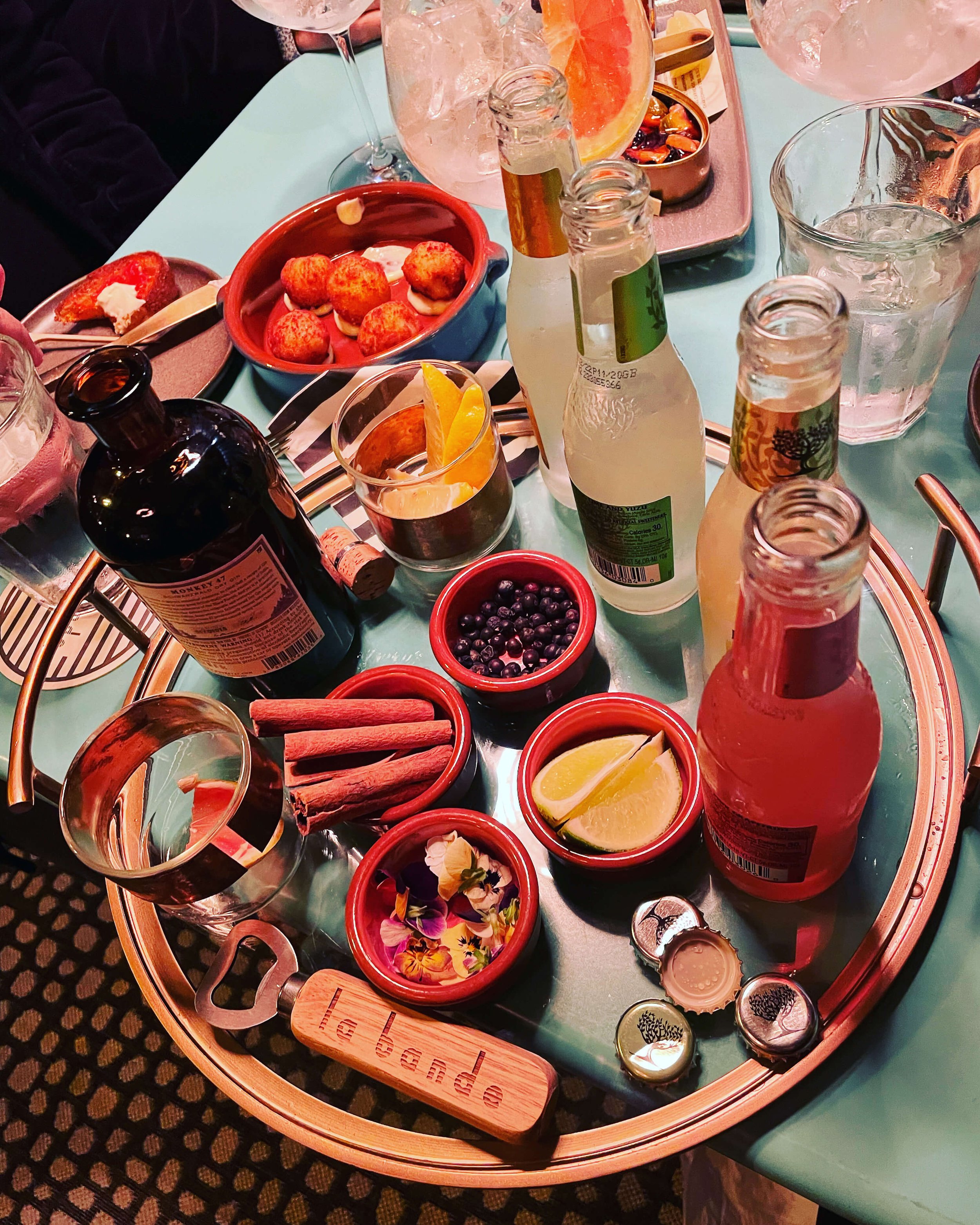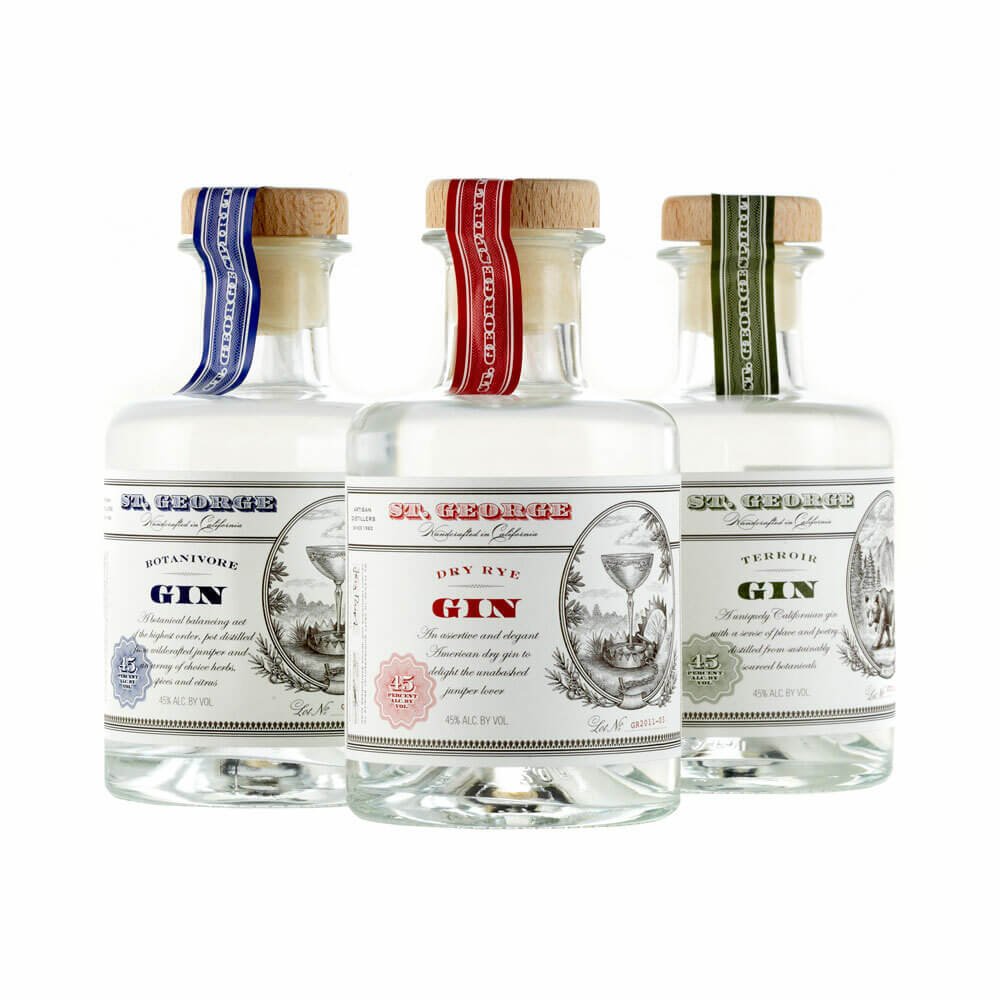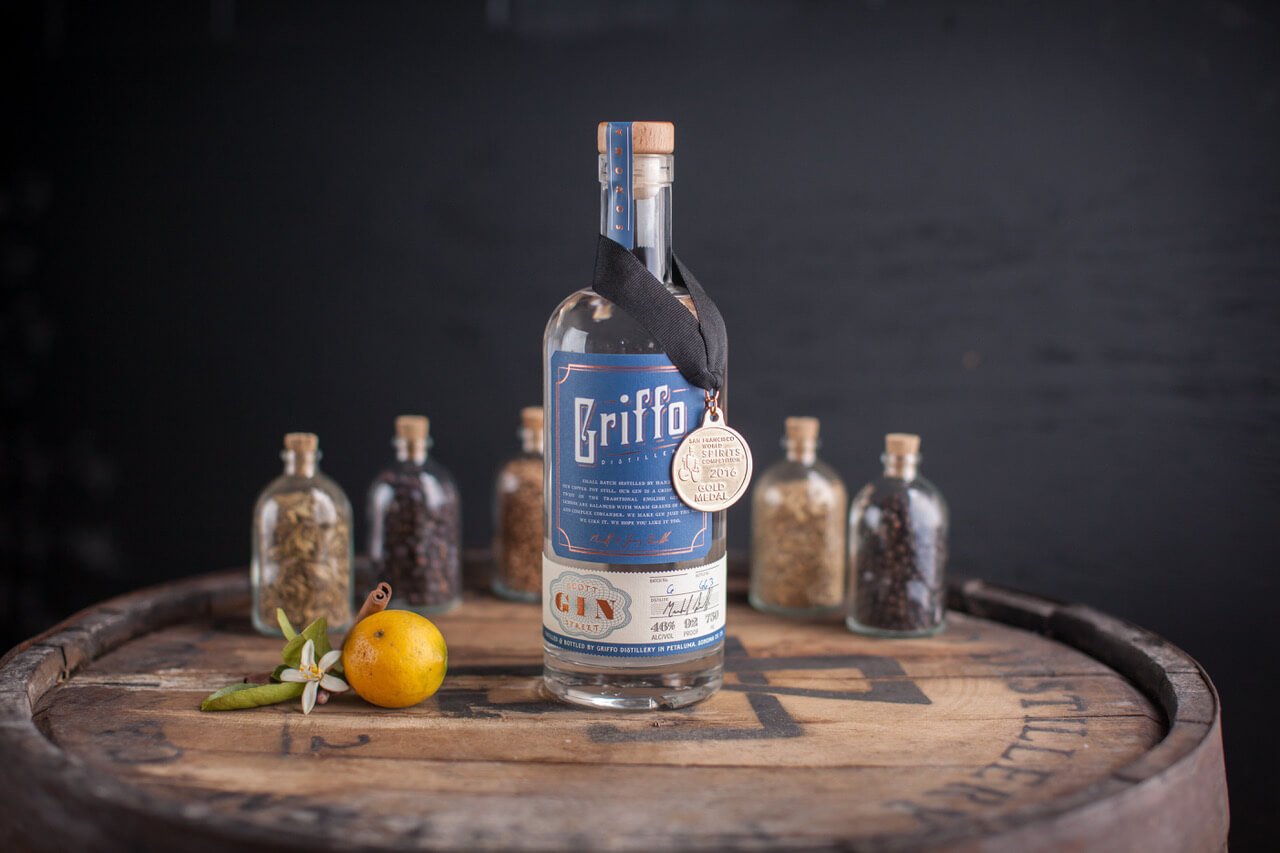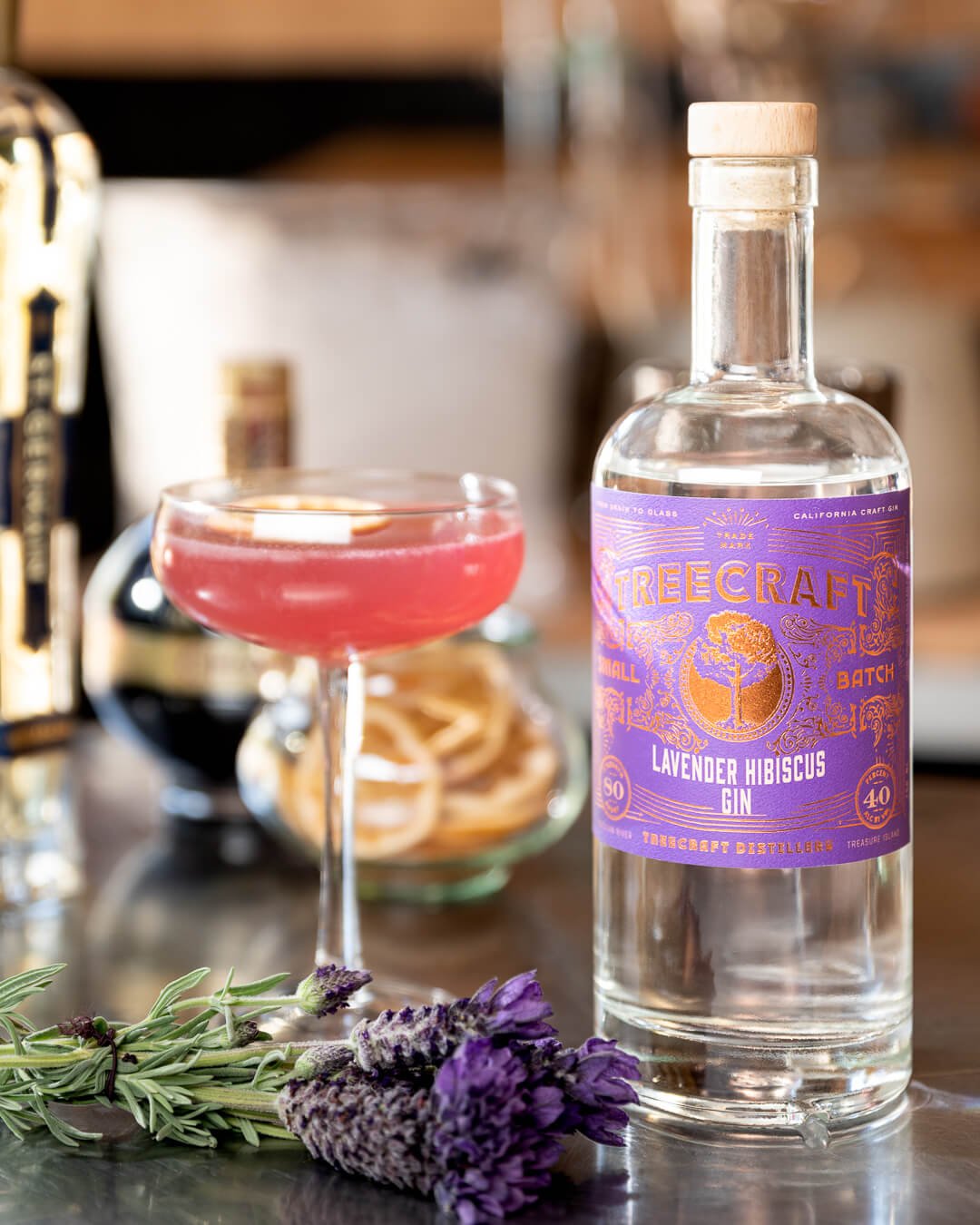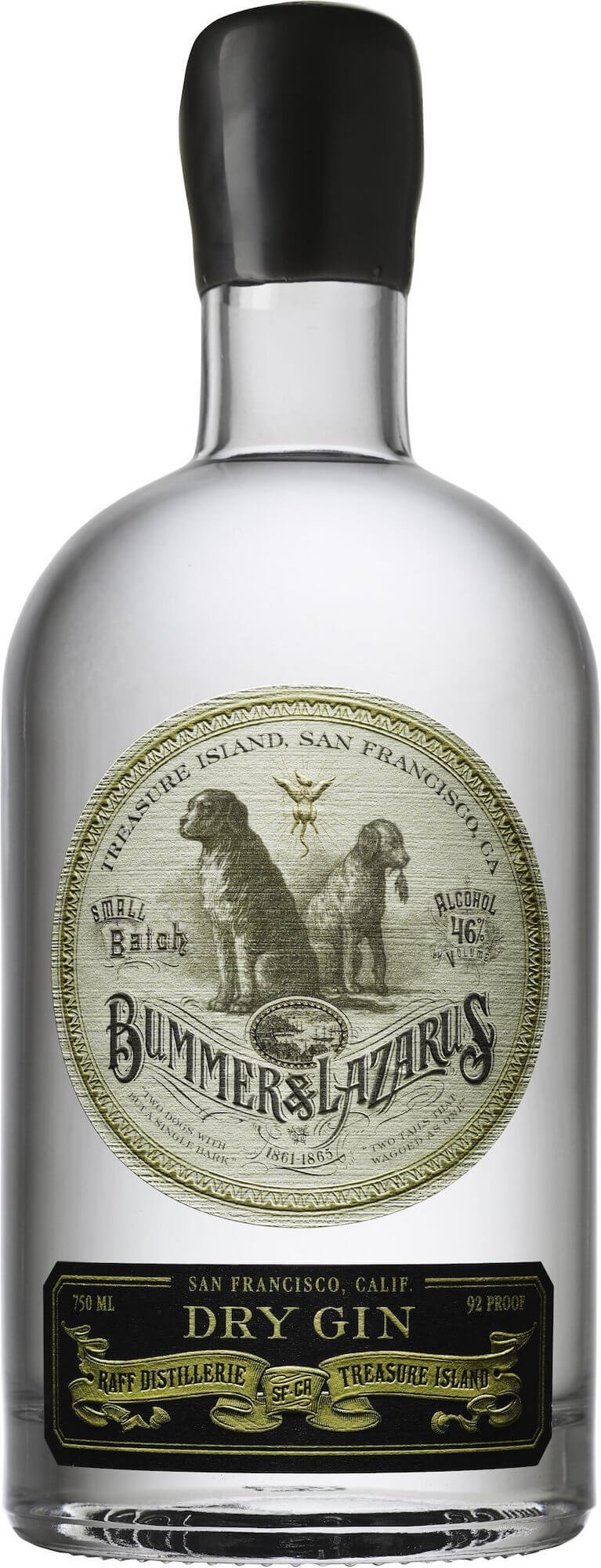6 Essential Bay Area Gin Distillers You Need to Know
From Stanley Tucci’s viral Negroni video, to everyman’s coronaviral excuse to mix yet another martini, last year saw gin’s popularity on the rise nationwide, with sales increasing by 2.5% to nearly 9.3 million cases and growing faster than the spirits market as a whole.
LaBande courtesy of Jim Gladstome
Gin is busting out all over. And the San Francisco Bay Area, known for its adventurous cocktail scene, is hardly an exception. San Francisco’s Whitechapel bar describes itself as “a celebration of the wonder of gin” and lays claim to the world’s largest selection of the juniper spirit—at times more than 400 brands. Over at La Bande, the city’s mighty mite-size new pintxo and conserva bar, the house special gin and tonic service brings a stunning tray to your table carrying a full bottle of Monkey 47, four different tonics, three varieties of fresh citrus, cinnamon sticks, a confetti of edible flower petals and more. Customization is also key at Wildhawk, where guests can choose from selection of gins including a couple of local ones, and vermouths to go into their double martini, which is served in a carafe chilled down from a stay in the freezer.
What is Gin?
Gin presents distillers with a relatively broad canvas to work with; in the U.S. it is defined only as a spirit no less than 80 proof produced by distilling or mixing with juniper berries and other aromatics” It’s no surprise then, that with its reputation for innovation, the Bay Area is a significant contributor to the profusion of craft-distilled regional brands that are helping to drive the gin category’s healthy growth.
Here’s a sampling of Bay Area gin’s best-known pours and best-kept secrets, all a far cry from your grandpa’s Gordon’s. Looking for barrel aged and sloe gins? You’ll find those too.
Junipero
Call it the ori-gin-al. Now in its 25th year on the market, Junipero—distilled and bottled on the San Francisco waterfront—lays claim to being the first American-made craft gin after Prohibition. A cousin of the city’s famed Anchor Steam Beer, Junipero was developed under the auspices of Anchor Brewery’s then-owner Fritz Maytag, who helped pioneer contemporary copper pot distilling in the U.S. during 1990s, launching several rye whiskeys prior to Junipero, which became his signature tipple. Packing a juniper-forward wallop burnished with citrus oils, this 98.6 proof doozy is ideal for martinis, gin rickeys and other old school cocktails. The brand is now part of Hotaling & Co.
No. 209
At Distillery No. 209, master distiller Arne Hillesland has expanded upon the eminently quaffable citrus and cardamom-accented original No. 209 Gin with a trio of tributes to Northern California’s winemaking heritage. He ages separate batches of gin in used chardonnay, sauvignon blanc and cabernet sauvignon barrels to create wonderfully complex spirits with toasty notes of oak along with fruit and floral essences. All are best enjoyed neat, with the golden Cabernet Sauvignon Reserve Gin particularly likely to please whiskey enthusiasts. While its original gin starts with a corn base, No. 209 also offers a unique Kosher-for-Passover gin, distilled from sugar cane: Toast “L’chaim!” with this Jewniper spirit.
St. George
Located in a former airplane hangar in the East Bay city of Alameda, the St. George Distillery is determinedly focused on distinctive craftsmanship more than marketing campaigns with a goal to “be able to pick our spirits out of a lineup on smell and taste alone.” In a product line that also includes eau de vies, brandies, and whiskies, St. George’s hallmark offering is a three-pack of its uniquely varied gin varieties that begs afficionados’ attention to nuances in taste and mouthfeel: Their Terroir Gin is strongly flavored with Northern California Douglas fir and bay laurel; “It was inspired by picking up my son at summer camp in the Oakland hills,” says distiller Lance Winters, “I wanted to capture the way the place smelled.” For those who find Terroir too much like liquid Christmas tree, St. George Botanivore Gin is light and lively on the palate with a fresh, savory-leaning balance that introduces black peppercorn, caraway, cilantro and dill seed to more typical gin botanicals including citrus peel and coriander. The third variety, Dry Rye Gin, is distilled from a rye whiskey base and a botanical blend that includes 50% more juniper than St. George’s other gins. Its spicy kick is ideal for a Negroni.
Griffo
When married distillers Michael and Jenny Griffo began tinkering with a formula for their Scott Street Gin (named for their distillery’s location in Petaluma, Sonoma County), finding just the right juniper became a quest. Michael, who holds a doctorate in physics, specifically wanted to avoid what he describes as the “resinous” taste of many London-style gins. After experimenting with species from California and Croatia, they landed an Italian wild-harvested juniper with a bright citrus note that the Griffos complement with Meyer lemon—picked from their own orchard— in their botanical mix. A prickle of cubeb pepper and the ginger-adjacent undertones provided by grains of paradise add a vivid edge to this particularly cocktail-friendly option. “The gin,” says Jenny, “plays beautifully off the Lillet in a Vesper.” The distillery also offers a 6-month chardonnay barreled gin, more suited to sipping straight. Griffo Distillery Barrel Aged Gin was a 2021 NY International Spirits Competition gold winner.
Spirit Works
Winner of the 2020 Distillery of the Year award from the American Distilling Institute, Spirit Works—based in the North Bay town of Sebastapol—is a predominantly female-staffed operation led by head distiller Ashby Marshall and focused on sustainable production processes. Their easygoing original gin has the distinction of incorporating tangy hibiscus in its botanical mix, but Spirit Works’ standout offering is their rare American-made Sloe Gin. Technically a liqueur, this tart, bittersweet 54 proof spirit is made from Spirit Works’ gin blended with sloes imported from Europe (Commonly called ‘sloe berries’, they are actually tiny blue stonefruits). Traditionally enjoyed during the Christmas season in England, Marshall says Spirit Works’ version “has really caught on in champagne cocktails like riffs on a classic French 75. It’s not uncommon for people to come into our tasting room having never heard of it and leaving with a bottle or two.”
Treecraft
On Treasure Island, a former military installation in the middle of the San Francisco Bay, Nate Byerly and Gordon Remple at Treecraft Distillery produce a London Dry Style Gin that’s subtly distinguished by Chinese long peppers in the botanical blend. But their creative flair comes to the fore in two surprising gins they distill from a honey-based spirit (The couple keeps their own bees). Though the juniper is dialed back, the sometimes similarly polarizing essence of lavender is front and center in Treecraft Lavender Hibiscus Gin. Still, over ice with lime juice and a splash of sugar-free tonic it settles in to a surprisingly balanced refresher. “When we started to formulate our Earl Grey Gin,” explains Byerly, “I was including black tea leaves in the distillation process. But that added an unpleasant bitterness. Now we just use the botanicals that are added to give Earl Grey tea its flavor—including bergamot, cinnamon and chamomile”—the resulting elixir is ideal for sipping straight, spiking a cuppa or mixing a next-level Ramos Gin Fizz.
Bummer & Lazarus Dry Gin
Gin drinkers who ever find themselves turning to the hair of the dog that bit them on the morning after could hardly look to more distinguished follicles than those of Bummer and Lazarus, the canine namesakes of the gin distilled from California brandy at the Raff Distillerie in San Francisco’s Bayview District. The inseparable pair of free-ranging stray mutts was protected, fed and cared by the city’s public during the 1860s in appreciation of their prodigious rat-killing skills. Carter Raff, whose family has lived in San Francisco for generations, is no doubt the region’s most hands-on distiller: Trained as a metal worker and machinist, he personally designed and built his own stills and bottling line from scratch. While Raff’s heart may lean more toward his more esoteric agricole rhum and absinthe (“The most authentic you can get, hands down”), his attention to detail in Bummer & Lazarus’ deft balance of herbal, citrus and floral notes has made it into one of California’s bestselling craft gins, second only, he says, to the nationally marketed St. George offerings.
Curious about what’s trending in gin? Check out our story on our favorite tropical gins and tempting garden gins.

